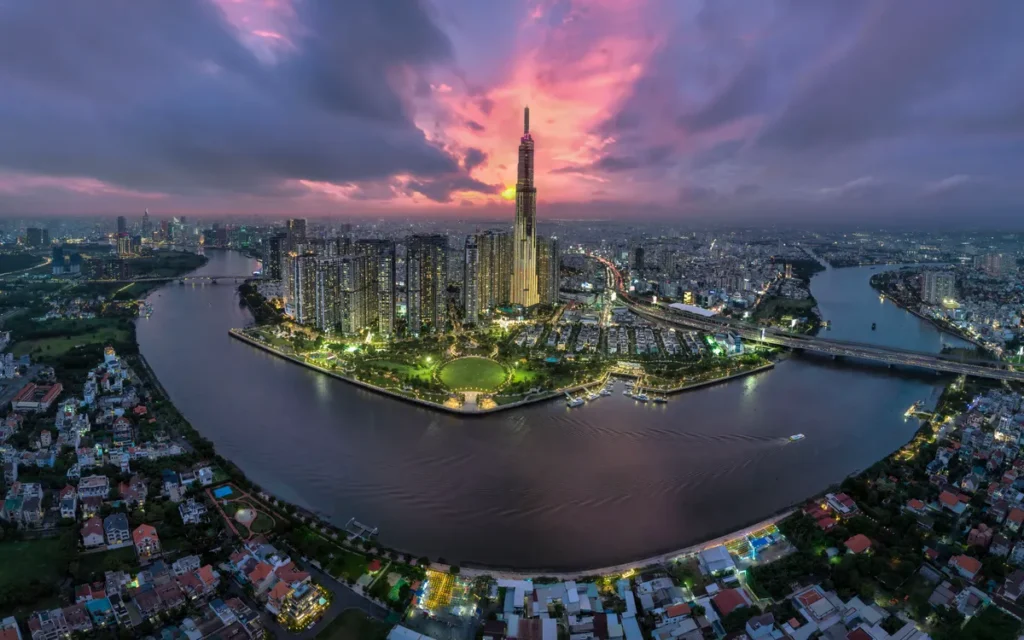2025 is the year to complete the implementation of the goals for the 2021-2025 period as well as create momentum for the implementation of growth goals for the next period.
Resolution 25 creates a launch pad for growth
The recent Central Party Executive Committee Conference approved the GDP growth target of 8% or more in 2025, thereby creating a foundation and launching pad for the economy to realize the double-digit growth target for the entire next period. In order to achieve this goal, in the early days of the At Ty spring 2025, the Government issued Resolution 25/NQ-CP, in which for the first time, 12 sectors, fields and 63 localities were assigned a very specific target number.
Most of the targets assigned by the Government to ministries and branches are higher than the results achieved in 2024, such as: The ratio of regular expenditure/total state budget expenditure is below 60%, the Industrial Production Index reaches 9.5%, and the number of international tourists reaches 22-23 million.
The new point of this resolution is that the Government has assigned specific targets to each locality based on its strengths and available potential. 18/63 provinces and cities were assigned double-digit growth targets, the lowest growth rate of 8% was assigned to 26 provinces and cities. Localities that only grew by 3-5% last year such as Gia Lai, Dak Lak, Dak Nong… must also achieve at least 8% this year.
Chairing the Government Conference with localities to implement the Central Committee’s conclusions and the National Assembly’s and Government’s resolutions on economic growth, the Prime Minister emphasized that GDP growth is an important factor that will affect the scale of the economy, per capita income, and the ranking of GDP scale in the world.
“There is no other way, we must maintain high and sustainable growth continuously from now until 2045, only then can we overcome the middle-income trap and rise up, achieve strategic goals, realize aspirations in the new era, develop richly, civilized, prosperous, people are increasingly prosperous and happy”, the Prime Minister emphasized.
In 2025, we have to do a lot of things, including increasing GDP growth by at least 8% to create momentum, position, and strength for double-digit growth in the coming years. The Prime Minister affirmed that this is an especially important but also very difficult task, requiring the drastic, synchronous, joint efforts and consensus of the entire political system, business community, and people of the whole country.
“If we want the whole country to grow at over 8%, all ministries, localities, and sectors must grow at over 8%, domestic and foreign enterprises, collective economy, private economy… must all grow at over 8%, it cannot be just a few localities, a few ministries, a few enterprises that grow high and then pull the whole country up, this is very difficult,” said the Prime Minister.
The Prime Minister noted that growth must be high but sustainable, and that macroeconomic stability must be maintained, inflation controlled, progress ensured, fairness, social security ensured, and a clean, green environment protected. Progress, fairness, social security, and the environment must not be sacrificed to pursue mere economic growth.
The Prime Minister praised some localities such as Bac Giang and Quang Ninh for setting high growth targets, of which Quang Ninh set a target of 16%, higher than the target assigned by the Government (12%).
“Guidelines” of each industry and each locality
As the economic locomotive of the country, Ho Chi Minh City is assigned a growth target of 8.5%, higher than the 7.17% of 2024. To achieve this figure, the city will have to use public investment to lead private investment, especially in the fields of logistics and finance.
The city’s first logistics center is expected to start construction in April 2025, part of a plan to build eight logistics centers by 2030. In addition, Ho Chi Minh City is also studying a mechanism to attract private investment in developing an international financial center.
Mr. Nguyen Van Dung – Vice Chairman of Ho Chi Minh City People’s Committee said: “Ho Chi Minh City is studying the public-private investment mechanism in developing digital infrastructure as well as the mechanism to attract social resources in training high-quality human resources, diversifying investment forms, not just investment from the State… In terms of institutions, the city will focus on implementing administrative reforms to create an open and favorable environment for the business community”.
The city has also resolved problems for dozens of real estate projects, contributing to land revenue reaching more than VND25,300 billion in 2024, an increase of 46% over the previous year.
Meanwhile, Bac Giang was assigned the highest rate in the country at 13.6%. In fact, Bac Giang has made remarkable progress in recent years thanks to its focus on industrial development, evidenced by the presence of electronics giant Foxconn for nearly two decades. Currently, the proportion of industry and construction accounts for 60% of the province’s GRDP, compared to the national average of 30%. This explains why Bac Giang has continuously maintained a high growth rate, even reaching 19.8% in 2022.
Mr. Pham Van Thinh – Vice Chairman of Bac Giang Provincial People’s Committee shared: “If the management agencies truly accompany and become friends with businesses, we will listen and gain the trust of investors, spreading the image of the investment environment for the locality. We maintain very quick connections via Zalo with representatives of each investor in the province. Investors can reflect information to the provincial leaders in the fastest way”. It is the spirit of openness and strong support for businesses that has helped Bac Giang become a bright spot in investment and industrialization.
Bac Ninh province has chosen a strategy to promote growth through public investment. The province has been assigned a GRDP growth target of 8%, based on accelerating key projects, especially transport infrastructure. The Ring Road 4 project – the capital region passing through Bac Ninh is one of the strategic projects, expected to be completed by the end of 2025, one year ahead of schedule. When put into operation, this route will connect industrial parks and urban areas in the province, opening up new development space. In addition, Bac Ninh also has expectations for Gia Binh airport with a total investment of 31,000 billion VND, expected to create a big boost for regional economic growth.
Not only localities, industries and sectors are assigned specific targets. In which, the growth rate of total electricity production and import of the whole system must reach from 12.5 – 13%. Electricity plays a core role in production and socio-economic development.
This is also the reason why our country has restarted the Ninh Thuan nuclear power project. Recently, Prime Minister Pham Minh Chinh chaired the second meeting of the Steering Committee for the construction of the nuclear power plant. The Prime Minister emphasized that this is a big issue, a national matter, so we need to focus, invest effort, intelligence, and mobilize the entire political system to participate.
Building a roadmap and specific goals is not only a motto and a successful experience of key national projects, but also a “compass” in implementing growth targets of each industry and each locality. The GDP growth target of 8% in 2025 demonstrates the great determination of the Government. Resolution No. 25 not only sets the target but also paves the way for flexible management policies, suitable to the reality of each industry and locality. If we take advantage of opportunities and implement drastic measures, the Government’s GDP growth target of 8% is completely feasible, opening up the prospect of reaching double-digit growth in the new development stage of the nation.
Some growth indicators of industries and fields:
1. The ratio of mobilization to the state budget over GDP reaches 16%
2. The ratio of development investment expenditure to total state budget expenditure reached 31%.
3. The proportion of regular expenditure/total state budget expenditure is below 60%
4. Total social investment capital compared to GDP reached 33.5%.
5. Total export turnover growth rate of goods reached 12%.
6. Trade surplus of goods reached 30 billion USD
7. Industrial production index (IIP) reached 9.5%
8. The growth rate of retail sales of goods and consumer service revenue reached about 12%.
9. B2C e-commerce market growth reaches 20-22%
10. The rate of enterprises applying e-commerce reaches 60-62%
11. The growth rate of total electricity production and import of the whole system reaches 12.5-13%.
12. International tourists reach 22-23 million arrivals; domestic tourists reach 120-130 million arrivals.
Double-digit growth target for 18/63 provinces and cities:
The Red River Delta region has 6/11 provinces and cities: Quang Ninh (12.0%), Hai Duong (10.2%), Hai Phong city (12.5%), Ha Nam (10.5%), Nam Dinh (10.5%), Ninh Binh (12.0%);
The Northern Midlands and Mountains region has 2/14 provinces, including: Bac Giang (13.6%); Dien Bien (10.5%).
The North Central and Central Coast regions have 6/14 provinces and cities, including: Thanh Hoa (11.0%); Nghe An (10.5%); Da Nang City (10.0%); Quang Nam (10.0%); Khanh Hoa (10.0%); Ninh Thuan (13.0%).
The Central Highlands has one province, Kon Tum (10.0%).
The Southeast region has 3/6 provinces and cities: Binh Duong, Dong Nai and Ba Ria – Vung Tau all at 10.0%.
















